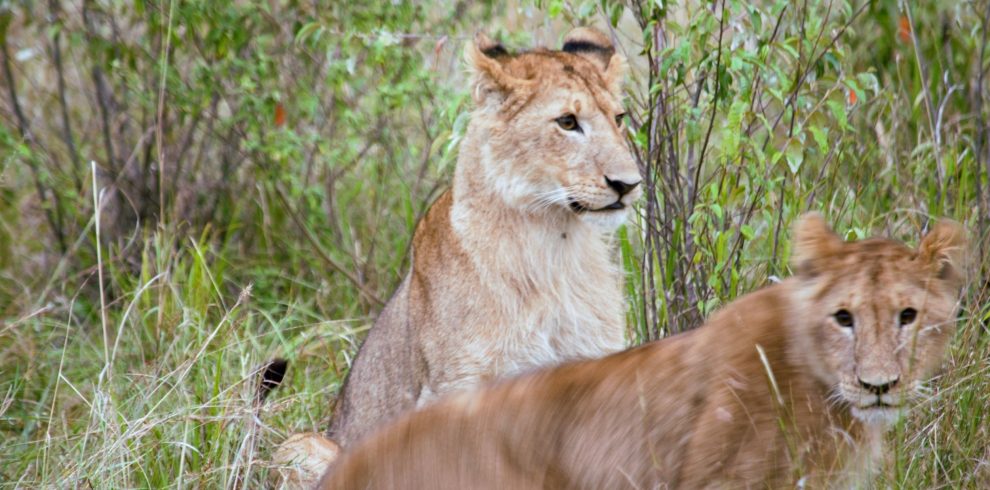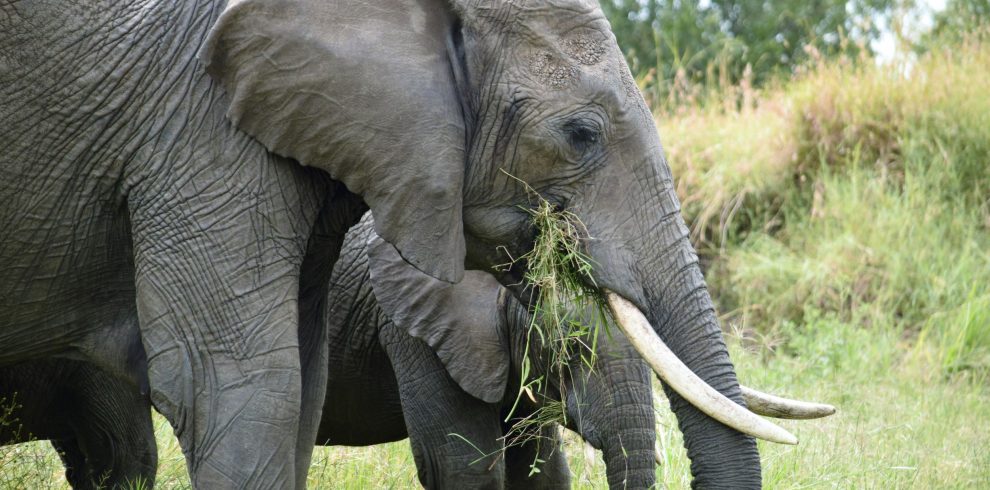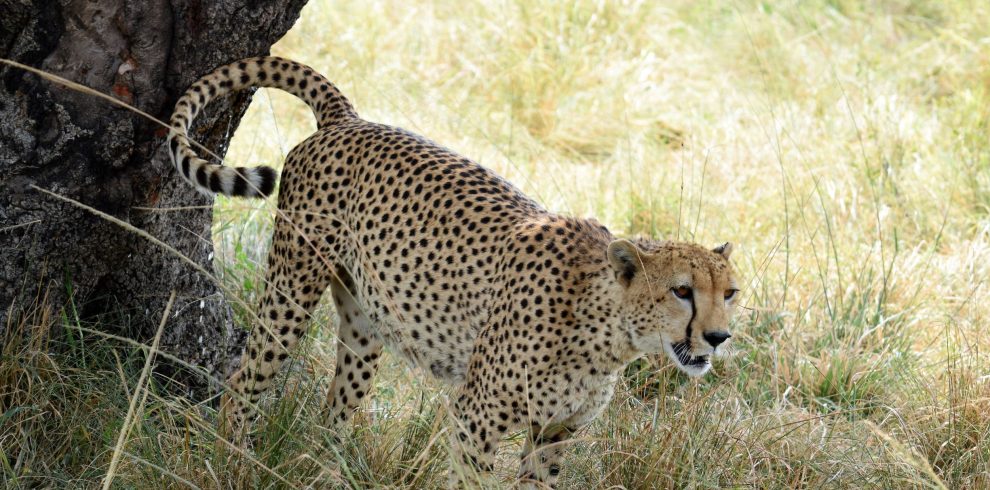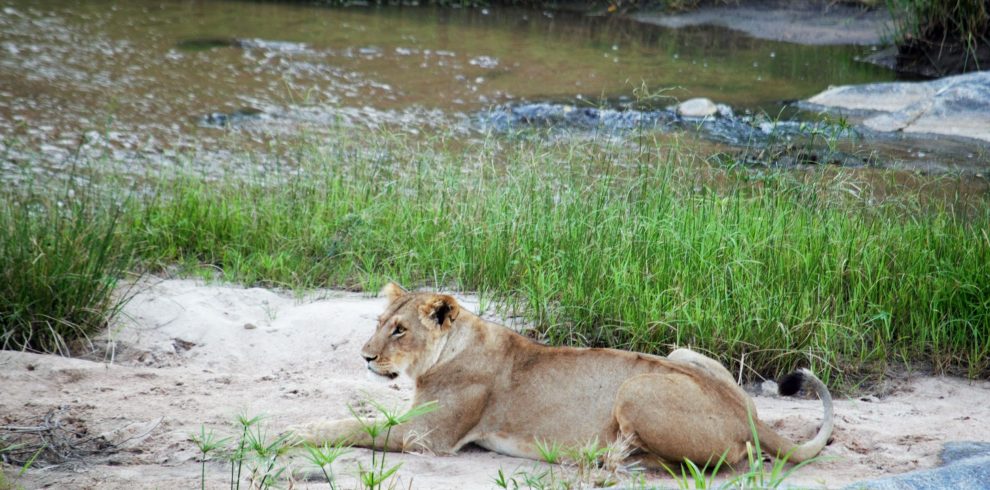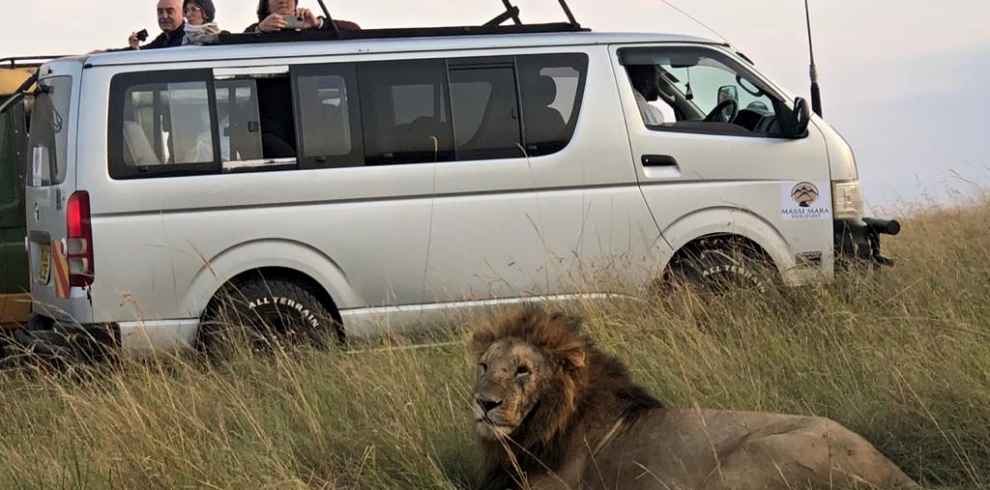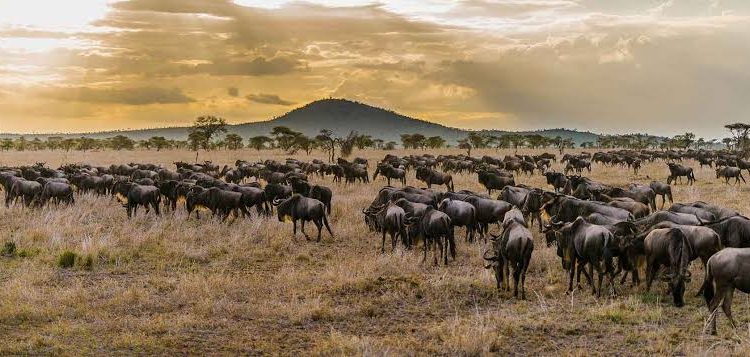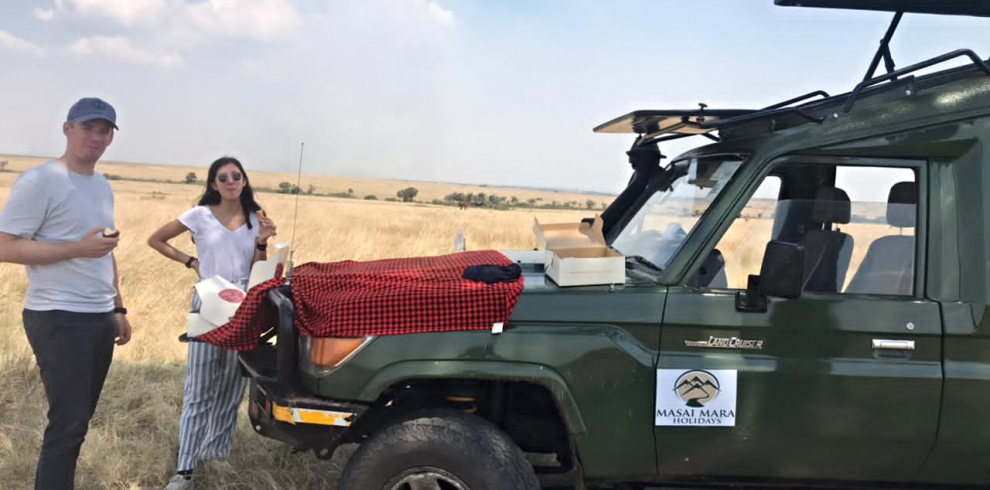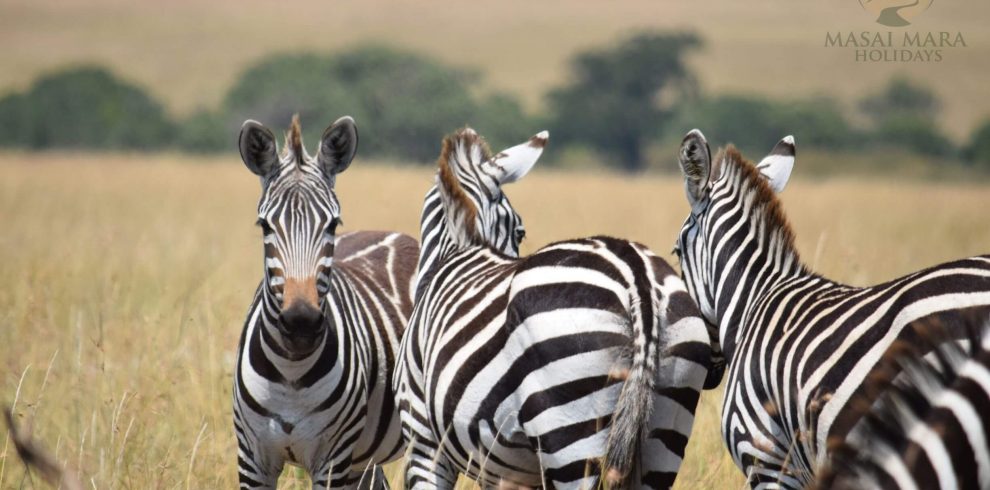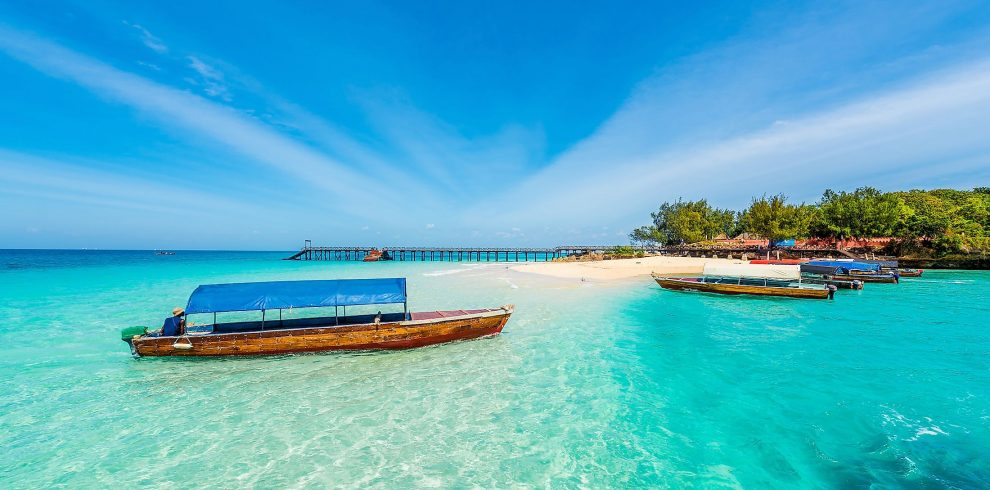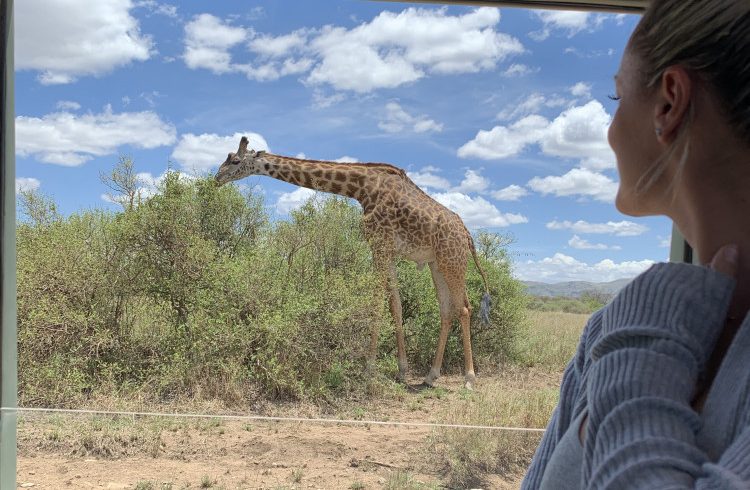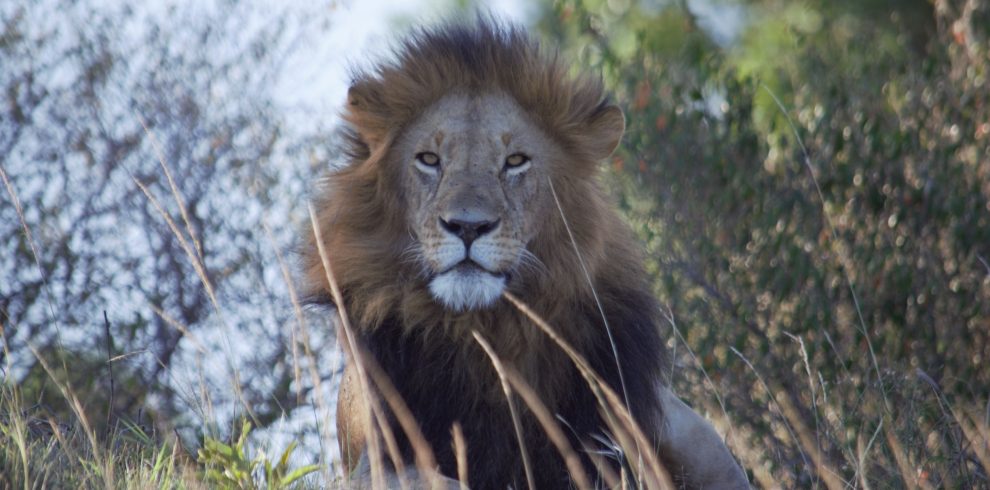Karibu! Tanzania!
Safari in Tanzania offers transformative trips through some of Africa’s greatest tourist attractions teeming with arguably the continent’s densest concentration of Wildlife. The Serengeti with the Great migration could easily be called the greatest game park on the continent, Mt. Kilimanjaro, the continent’s highest peak, Ngorongoro Crater, a world heritage site and wildlife haven, and Zanzibar offering a rich history and white sand beaches truly make Tanzania stand out as a unique safari destination. The country also offers unique cultures, from the traditional nomadic Maasai to mix of Arab and African influence at the coast shows that there is more to Safari holidays Tanzania outside the traditional African Wildlife Safari. As part of East Africa, Tanzania Safaris attract lesser crowds compared to Kenya or South Africa, making it far more exclusive destination.
At Masai Mara Holidays, we offer well crafted Tanzania safari packages offering a taste of the country’s most popular national parks with options for a quick or more laid back pace safari.
Choose your trip
Popular Tanzania Safari Tours For You
Browse through our series of Safari trips in Tanzania and feel free to request a quote, these safari holidays have been expertly designed to offer you an unmatched African safari experience centered around your personal preferences, budget and interest
Start Planning Today!
Tanzania Safari Things to Do
Tanzania safaris cover a variety of activities and experiences to cater for all types of travelers; from wildlife centered holidays to Adventure tours and cultural experiences. Are you seeking a beach relaxation or combining Safari and Beach? Tanzania safari holidays are sure to meet your desires and travel expectations.
Wildlife safaris in Tanzania date way back to the era of Big game hunters such as Ernest Hemingway. Today, wildlife safaris have taken a turn to the traditional photography safaris as the mainstay of Tanzanian Tourism with little licensed hunting safaris left. Most wildlife themed safari holidays in Tanzania are escorted safaris with an experienced and knowledgeable safari guide who understands the bush and should be able to discuss various animal species and plants along the safari.

Notably the best time for wildlife viewing in most of Tanzania's National Parks is early morning and early evening with the exception of Serengeti National Park and Ngorongoro Crater where a full day of game drive would still be very rewarding.
What are the Highlights of Wildlife Safaris in Tanzania?
Encountering Lions
Seeing a lion on safari is what most travelers would call the epitome of a Tanzania safari holiday. The country's national parks collectively boost a dense population of lions with the highest number spread with in Ngorongoro Crater and Serengeti National Park. Seeing a lion on a safari in Tanzania's national parks is always an incredible experience based on the fact that you are seeing them from their natural habitat. It is very common to come across a whole pride taking shade under an acacia tree or trailing along the game trails in the morning hours after a nights hunt. It's is also not uncommon to have your slumber disturbed by the distant but powerful roar of lions in the night a few yards from your room.
Leopard Sighting
It is always a special moment encountering a leopard on safari in Tanzania, as they are very difficult to spot on safari, primarily because they are naturally elusive and nocturnal. An interesting fact is that leopards are the most successful hunters among all predators.
Cheetah Sighting
Notably known as the fastest animal on land, cheetahs are very exciting animals to see on your safari holiday Tanzania. Despite existing in reduced numbers, there are quite high chances of having a sighting in Serengeti National Park in the open plains where they love to hunt.
The Great Migration
This is the annual cyclical migration of over 2 millions grazers from southern Serengeti -Ngorongoro Area northward to Northern Serengeti all through to Kenya's Masai Mara National Reserve and back. This spectacle is considered to be one of the greatest natural wonders of the world. The best time to plan your Tanzania tours to see the migration is from December to July, with February to March being the most rewarding season when the Southern plains are dotted with millions of wildebeest and new horns. April to June offers the highest concentration of animals, and June is a good time for planning a Tanzania safari trip in Serengeti to witness the Grumeti River Crossing in Western Serengeti, the thrilling Mara River Crossing can be witnessed around July to August in Northern Serengeti.
What are the best wildlife viewing destinations in Tanzania?
The popular Tanzania wildlife safari destinations are located in the North, renown as "Northern Circuit", most Tanzania safari holidays explore this region offering visits to the famous parks of Ngorongoro, Serengeti, Lake Manyara and Tarangire. A high number of tourists to Tanzania shun the wilder Southern Circuit comprising of key players such as; Selous Game Reserve, Ruaha National Park and Mikumi National Park. However, the southern is arguably even better than the north, a magnificent wilderness teeming with game and virtually devoid of tourists.
Ngorongoro Crater
Nearly 3 million years old, Ngorongoro Crater in Northern Tanzania is a haven for Tanzania Safari tours focused on wild game. Famous for being the worlds only unbroken volcanic caldera. Standing on the rim of the crater which is a popular stop for Tanzania tours to the Serengeti and gazing into this vast arena, one is struck by the sheer size and symmetry, an ecosystem that sustains various wildlife species. Most Tanzania safari packages include an experience to descend into the floor which stands out as one of the most productive game drives there is in Africa. Owing to the permanent supply of water and fertile pasture at the crater floor, this ecosystems is able to support the 250,000 grazers; zebras, wildebeest, buffalo, gazelle, waterbucks, elephants, reedbuck, baboons, vervet monkeys and bushbucks. To balance this equation, lion, leopard, cheetah and hyena also exist in big numbers. This is the only park in Northern Circuit for Tanzania safaris virtually guaranteed to spot the black rhinoceros.
Serengeti National Park
Serengeti National Park in Northern Tanzania is easily Africa best National Park, and it's not just its wildlife or the great migration of 2 million grazers that stumble through this ecosystem. It was the Maasai that named it "Siringitu" meaning "a place where land moves on forever" and this sight of vastness will blow you away. Most Tanzania tours and Safaris to Serengeti National Park aim at the great migration, that is central to the Serengeti. This continual movement comprises 1.3 million wildbeest, 200,000 zebra, 300,000 Thompson gazelle and thousands of topi and eland following the instinct to seek greener pastures. Even outside the migration, Tanzania safari tours in Serengeti offer plenty to see, including large clans of hyenas, leopards, cheetahs, elephants, Buffaloes and big lion prides among other wildlife species.
Tarangire National Park
Tarangire National Park is one of Tanzania's most beautiful reserves located within the Great Rift Valley in Northern Tanzania. Tanzania safari tours in Tarangire mainly focus on the signature attractions being elephants, it is possible to count over 100 in a single day. Tarangire is also a hub for boabab trees, extremely huge impressive trees that live for thousands of years and offer wonderful silhouettes. Tanzania tours to Tarangire offer almost all wildlife sighting but with the exception of rhinos. Like the Serengeti, Tarangire also has an annual migration of that includes an estimated 25,000 wildebeest, 3,000 elephants, and 30,000 zebras from July to Late October. Dry season offers the best game viewing opportunities as the migration congregates around the Tarangire River and its water pools. Depending on the rains, these animals can migrate as far as Lake Manyara National Park northwards, and Simingiro Plains Eastwards to later return back to Tarangire when the rains stabilize.
Lake Manyara National Park
Nestled in the Great Rift Valley floor in Northern Tanzania, Lake Manyara National Park comprises of the shallow soda lake, ever green underground forests, swamps, acacia woodland and some scattered boabab. Tanzania safaris in Lake Manyara offer all year round fine wildlife viewing owing to the existence of water all year, and the migrating animals of Tarangire. The result is a wide variety of wildlife, including a great flock of pink flamingo on the lake itself, elephants, hippos, buffalo, zebra giraffe, leopard and the popular tree climbing lions that cannot be found anywhere else within Tanzania
Selous Game Reserve
Selous is the largest game reserve is Africa, and offers various Tanzania safari activities than any other park in the country to even include boat safaris on the mighty Rufigi River. While Tanzania tours offer escorted game drives to Selous, particularly the sector north of River Rufigi, it is also notable that nearly 95% of this vast is gazetted into private game hunting concessions. Wildlife safaris in Selous focus on game areas surrounding the waterways, a complex of five lakes and connecting channels fed by Rufigi River. Giraffe, Elephant, buffalo, Impala, common water buck, wildebeest, bushbuck, eland and greater kudu are some of the common wildlife species, but the park generally is less reliable for big cat sighting. Tanzania safari tours in Selous are highlighted by the boat trips along The Rufigi, it's muddy colored waters are a perfect sanctuary for crocodiles and hippos. Elephants, giraffe and Buffaloes often come to drink
Mikumi National Park
This fourth largest Park in Tanzania shares border with Selous, and wildlife freely crosses through the two parks. Mikumi's seasonally inundated grassland hosts impressive herds of zebra, giraffe, buffalo, waterbuck, reedbuck,wildebeest, buffalo, elands and Impala. Occasionally packs of African wild dog are seen and a healthy population of lions and spotted hyena.
Ruaha National Park
Ruaha is Tanzania's biggest, wildest and most rugged national park comprising of all semi arid rocky slopes, a harshly beautiful landscape alleviated by the near Great Ruaha River and boabab studded plains. Safari holidays Tanzania to Ruaha offer fine game viewing with large wildlife concentrations with elephants leading the count with an estimated 12000 elephants. Ruaha arguably goes toe to toe with the Serengeti when it come to large predators, big lion prides, cheetahs,and leopards are regularly seen. Other predators to include the African wild dogs, spotted hyena, and jackals also exist.
Active travelers can choose from a wide variety of adventure activities to couple up with their Safari tours in Tanzania, options range from conquering the tallest mountain mountain in Africa, Mount Kilimanjaro, or at taking on lower altitude mountaineering on Mt Meru or Oldonyoi Lengai. For more laid back adventurers seeking Tanzania Safari Holidays with less thrill, hot air balloon safaris in Serengeti, snorkeling and scuba diving at the East Coast among other various activities are rewarding.
What are the best Adventure Safari ideas in Tanzania?
Climbing Mount Kilimanjaro
Mount Kilimanjaro is the tallest standing mountain in Africa, it's two peaks; Kibo is at 5895 meters and Mawenzi is at 5,149 meters. Presently, over 40,000 adventurers climb the mount each year, the climb itself is considered easy and comfortable owing to its easy gradient but should not be under estimated. Kilimanjaro offers upto six routes up the mountain-Marangu, Umbwe, Machame, Shira, Lemosho and Rongai. Marangu route is the most popular route route for Tanzania tours to climb the mountain, this route offers easiest gradient and it the only route with accommodation in huts and can be completed 5 days making it the cheapest option for Tanzania safaris in Kilimanjaro.
Climbing Mount Meru
Mount Meru located in Arusha as part of Arusha National Park ecosystem stands at 4,566 meters and is the fifth tallest mountain in Africa. Walks to the lower slopes or climbs to the summit are possible, planning a Tanzania safari trip to the hike to ascend the peak, you will need about 4 days. Many seasoned climbers from Kilimanjaro rate this climb as a more satisfying experience, owing to the fact that there is more wildlife encounters, fewer climbers and the amazing views of Kilimanjaro from Meru's eastern flanks.
Climbing Ol Doinyo Lengai
Ol Doinyo Lengai locally translating to "mountain of God" is the last remaining active volcano in Tanzania, active for a century and last erupted in 2010 but with rumblings emitted sometimes which to the Maasai people, is the voice of their female deity. The mountain stands at 2,980 meters, It is possible to add up the climb to the summit to your Tanzania safari trip, the climb itself takes a very long day starting at midnight to avoid the heat on the shade less slopes. This climb is a bit tough and requires you to be physically fit to take on sheer, slippery slopes, icy winds near the summit and an exhausting descent.
Hot Air Balloon Safaris in Serengeti
Balloon safaris in Serengeti National Park are a good way to view wild game from a bird's view, the thrill of floating above the vast plains, heading over whichever direction the wind takes you is a treat of Tanzania safaris you will find in very few other places. Flying lasts about an hour before you a treated to a luxurious champagne bush breakfast upon landing.
Scuba Diving & Snorkelling
With over five species of marine turtles, 40 genera of coral reels, 400 species of fish, Tanzania safaris offer some of the best opportunities for scuba diving and snorkeling. There many diving sites stretching along Tanzania's coastline including; Zanzibar (Uguja), Pemba, Mafia Island and Mnemba Islands. You will find dives suitable for both the total novice and the very experienced, most beach resorts offer dive excursions and courses with some owing their own equipment. Never dived before but are a serious adventurer? There are options do to within 48 hours if you complete a Discover SCUBA course which allows novices to do a deep sea dive after a few hours instruction.
Swimming with Whale Sharks
If swimming with sharks is your dream, consider a Tanzania tour this next summer, Zanzibar and Pemba Islands offer the opportunity to swim with these gentle lads. There is no Tanzania safari tour more humbling than swimming along a whale shark, which grow to be 150 years old, an weigh in at 15 tons and reach length of 14m. It is not guaranteed that you will see them, but with proper timing around November, and the help of local trackers, you will have high chances of encountering the gentle lads.
Cultural tours in Tanzania offer a unique experience to engage with some of Africa's remaining preserved local tribes, for many Tanzania safari goers, the most romanticized of Tanzania's local tribes are the Hadzabe, Datoga and Maasai who many see as epitomizing the soul of ancient Africa.
What are some of the Best Ideas for Tanzania Cultural Tours?
Hadze Tribe
The 200 Hadzabe families that inhabit the lake shores of Lake Eyasi offer cultural encounters for Tanzania safaris in the northern circuit. The Hadzabe are Among the only left hunter-gatherers in Africa who have lived like this for over 10,000 years. An encounter with the tribe on a guided tour, you will learn the ways of the Hadzabe tribe and also engage in the bow and arrow hunting techniques together with their ancient ways of survival.
The Maasai
The Maasai are often seen herding cattle along the northern circuit safari routes, popularly known for their reputation as warriors and living nomadic lives, the Maasai upto date live in semi permanent villages of hunts fenced by dry shrubs. For a cultural encounter with the tribe, many Tanzania tours offer a stop inside Ngorongoro Conservation Area before traversing into the Serengeti. This tour offers an experience into the day life of the Maasai and their cultures and dances
Datoga
The Datoga, like their Maasai neighbors, are dedicated cattle herders but are believed to have been resident in Tanzania long before the Maasai.
Tanzania safari and Holidays offer the opportunity to relax at the beautiful, pristine coastline, covered by white sand beaches

What are Tanzania's Best Beach Holiday Destinations?
Zanzibar
Zanzibar's white sand beaches are a prefect retrieve one from the excitement of a concluded Tanzania wildlife safari from the mainland. Take walks on the beaches and enjoy a magical world unfold beneath you. Zanzibar offers various beaches and beach resorts to cater for all travelers, but the East coast is generally considered to have the most beautiful beaches lined with palm trees and served by sprawling resorts, the north coast also has a fair share of the beautiful cost line around Nungwi.
Mafia Island
Mafia Island offers a touch more sophisticated and exclusive than Zanzibar but without the member price tag. This is an exciting coconut-covered island to visit. The beaches are superb and it’s mangroves and marine park ensure that the marine life is a beautiful and underwater super experience far superior to Zanzibar or Pemba more out-of-the-way and a little harder to reach.
For a country with a rich history, Tanzania offers many sites for historical tours, from ancient coastal town to the cradle of mankind, clearly there is much to add on to your Tanzania safari.
The Best Places to Visit for Historical Tours in Tanzania.
Bagamoyo and Kaole Ruins
Bagamoyo located in Dar es Salaam well known as Port of Bagamoyo is famous for being the embarkation point for slaves taken from East Africa's main land in the 19 century. In the early era of European settlement, the port saw a transition when a Catholic mission was established, missionaries bought slaves, liberated then and settled them in a Christian Freedom Village. Some of the tourist landmarks to look out for on your safari in Tanzania here include; the Old Fort, the oldest building expanded from a slave prison, Liku House, German Boma, Bagamoyo Tea House, Jama' at Khana and Old Caravanserai
Kaole Ruins are remains of an ancient trading center dating back to the 13th century. Comprising of two mosques and gravestones and around 30 tombs. Many travelers pray at the tombs that belong to Arab traders buried there with fascinating stories. The 15 century well found here is also a place of pilgrimage where people come to take water and pray.
Oldupai Gorge
Oldupai Gorge Museum located within the Ngorongoro Conservation Area is one of the most important paleontological sites that were discovered in Africa. Tanzania safari tours offers a stop to the Museum for an excursion that shows off footprints that date back to about 3.6 million years ago, human fossil exhibits and many animal remains, some belonging to extinct species such as the Pygmy giraffe
Exclusive safaris in Tanzania offer pure luxury from the lodging to safari game drive and the guiding itself. Expect to fly to and fro, without the hassle of road drives but rather a seamless experience with having to ensure the road only on game drives. Outside the traditional big numbers of tourists, expect to meet a few other vehicles on game drives, for visitors staying in the few losses and camps with in the private reserves themselves.
What are the the Best Tanzanzia Exclusive Safaris?
Grumeti Game Reserve - Singita
Grumeti Game Reserve is one of the few wildlife reserves that offer exclusive Tanzania safaris, the reserve is a northern extension of the Serengeti western corridor and receives a fair share of the great migration through June - July. As a private reserve, Grumeti is only serviced by a trio of lodges and camps; Faru Faru, Sakawa and Sabora that are extremely high end properties operated by South African Organistion, Singita. As part the few places offering Tanzania exclusive safaris, Grumeti Game Reserve protects a similar range of wildlife to the Serengeti Western Corridor but off road driving is allowed and accessing the reserve for game drives is limited to only guests staying at the three properties in the reserve.
&Beyond Kliens Camp
Are you looking for Exclusive Tanzania Safari in Serengeti National Park, &Beyond Kliens Camp located in a private concession bordering bordering the Serengeti in North East offers beautifully structured cottages appointed on the hill side of the Kuka Hills. Game drives in this private concession are superlative with off road driving and night game drives allowed.
Choose your trip
Best Selling Tanzania Safari Packages
Browse through our Best Tanzania tours carefully picked and ranked through actual feedback from our travelled guests and the most booked and desired itineraries
FAQs
Frequently Asked Questions About Safari in Tanzania addressed by an our seasoned Tanzania safari experts at Masai Mara Holidays (Ltd)
The best time for Tanzania safarin the national Parks located North of the country is June through March. Late December to February and July and August are the busiest periods. April and May is traditionally the rainy season and travel in 4wd vehicles is highly recommended for safari holidays in Tanzania, however, as the seasons are not as pronounced as they were a few decades ago, Tanzania safari tours during that period may in fact encounter little rain. Advantages of Tanzania tours in April and May is that they do include lower rates, fewer tourists, and great game viewing in some parks, such as the Serengeti and Ngorongoro Crater. This is also great time to book Tanzania safari packages to visit the Great Serengeti Migration, with possibly no other vehicles in sight.
Light rains usually fall late October to early December, but little negative effect on game viewing in some reserves. November is in fact one of my favorite times for a wildlife safari in Tanzania’s northern circuit, a little rain is nice because it helps drop the dust out of the air, and the bush turns from brown to green. For southern Tanzania safari, the best months for game viewing are June to November due to the longer 6-month dry season compared to the north. The calving season for wildebeest in Serengeti National Park is from mid-January to mid-March.
The cost of any safari in Tanzania is determined by your budget level, personal preference mainly in terms of comfort level, how many people you plan to travel and the month you plan to travel. Ideally, lodges and camps levy a peak season high season rate for the months July to September and Christmas to the New Years holidays. This is the most expensive time to book accommodation whereas the discounted low season rates are levied for the during March all through to May and discounts can go as far as 30 to 40% on room prices. The cost of tour Tanzania safari tour is largely determined by your comfort level choice, with the accommodation being the main factor. The types of Tanzania safaris include; budget, midange and luxury safaris.
Budget Tanzania Trips (camping and tented camps)
At the lower end are the “budget” or “camping” Tanzania safaris. These are touted for a little as $150 per person per day, but a trip with a reliable Tanzania tour operator costs $200–300 per person per day, depending on the group size, the duration of the safari, exactly where you’ll be going, and whether you’re sharing the trip with other travelers. Nights are usually spent in small tents, either in public campsites inside the parks or in cheaper ones outside. For Tanzania camping safari, expect to move in with the crew for some of the work, like pitching tents and washing up, and be prepared for a degree of discomfort: thin mattresses and sleeping bags, not having a shower every night, and basic food. More expensive tented camp Tanzania trips ($275–350) get you better tents, camp-beds with linen, portable (chemical) toilets, and tend to use wilder “special” campsites as opposed to the public ones.
Mid-range Tanzania Tours
For $350–500 per person per day, you get a midrange Tanzania trip to stay in wildlife lodges or at the more basic tented camps, which have proper rooms (or walk-in tents that are much the same), restaurants, bars, and often also swimming pools. Some can be wonderfully intimate, but most are large (eighty rooms or so), overrun by package tours, and lack much of the wilderness feeling. Before booking your Tanzania tour, find out what kind of vehicle will be used, if you’re on a shared safari, and establish the maximum group size. Be aware that group sizes may become irrelevant if you end up being ferried around in convoys, as frequently happens with the larger operators dealing with (mostly US) Tanzania safari package tours.
Luxury Tanzania safaris (Lodges and tented camps)
Spending $500–900 per person a day gets you a private “tailor-made” Tanzania tour that could include flights – dispensing with the dusty discomfort and time wasted getting to places by road. On such jaunts, the guiding and service should be top-notch, as should the tented camps you’ll be staying in Pulling out all the stops, for a blistering $1500 a day and up or thereabouts you can treat yourself to a Hemingwayesque “mobile camping safari”, with fly-camps set up in the bush before your arrival each evening, champagne breakfasts (actually sparkling wine), and a rifle-toting expat as your wildlife guide. The main advantage to a super-luxury safari holidays in Tanzania is the exclusiveness as you enjoy safari in the most private concessions most Tanzania National Parks
Given the considerable cost of Tanzania safaris, and the hefty deposit required when booking ahead (anything from thirty percent to the full amount upfront), the importance of taking your time in choosing a reliable and trustworthy Tanzania safari company cannot be stressed highly enough. Ensure your selection is responsible, ethical, and – within reason – best priced. Most of the Tanzania Safari Operators are based in Arusha or Dar es Salaam, but there are also some in Mwanza, Iringa, and – specializing in Kilimanjaro climbs – in and around Moshi. The overseas Tanzania tour operators have their own Tanzanian operations, too. Standards can and do change, however, so always check up on companies you’re interested in beforehand online.
Drive at the set Park Speed
Driving Most national parks and game reserves have a speed limit of 50kph, with 25kph recommended to avoid throwing up too much dust or scaring animals; driving is only permitted in daylight. Keep to authorized tracks and roads: off-road driving is illegal and causes irreparable damage to fragile ecosystems via erosion-fuelled chain reactions.
Do not disturb Wildlife
So much is made of seeing the “Big Five” – elephant, lion, leopard, cheetah (or buffalo) and rhino – that at times you’ll find up to a dozen vehicles converging on the same pride or pissed-off leopard up in a tree. For some species, this is just an annoyance, but for cheetahs, it’s a serious problem: they only hunt by day, and it’s difficult to be stealthy when surrounded by gaggles of tourists. So, let the driver know your preference. Also, be quiet while game-viewing, switch off the engine, and keep a distance of 25m.
Do not feed animals
This leads to dependence on humans; you can see the effect on baboons and vervet monkeys, which can be brazen, and even violent. Leave no trace Don’t pick or damage plants, and take care putting out campfires and cigarettes
There are a number of daily flights to Tanzania, with most arriving into the country through Dar es Salaam Airport. Many flight aggregators fly directly from Europe apart from the United States of America.
Among the the airlines that operate various routes flying into Tanzania include; KLM, Air Tanzania, Emirates, British Airways, Ethiopian Airlines, Kenya Airways, South African Airways and Swiss Air, all the above mentioned offer flights from Amsterdam's Schipol Airport
From London, British Airways has a daily flight into Tanzania through Dar es Salaam, Qatar Airlines flies to Dar es Salaam and Zanzibar via Doha, Turkish Airlines from Istanbul flies to Dar es Salaam and Kilimanjaro whereas Air Tanzania, Kenya Airways and Uganda Airlines offer daily flights from destinations in East Africa to Dar es Salaam, Kilimanjaro and Zanzibar.
Generally, it is possible to fly to Tanzania from all corners of the world, either directly or through connecting flight, to find your option, Google flights is a perfect place to look for the best flight option.
All travelers to Tanzania apart from East African residents are required to acquire a Visa, this is obtainable on arrival if your nationality is not listed among the countries on the referral list. However, if it possible, acquire your visa in advance through online application for a seamless experience at immigrations. Tourists visiting the country for Tanzania safaris should obtain the ordinary visa, as for American Passport Holders, you apply for the multiple entry visa.
You must ensure that your passport has a validity of at least six months before traveling to Tanzania, and the passport should also have at least one unused visas page.
Travelers to Zanzibar are required to obtain travel insurance which is mandatory too permit entry into Zanzibar, this can be acquired well in advance through online application.
Yellow fever certificate is mandatory for travelers to Zanzibar while in Tanzania's mainland, you will only be required to show proof of yellow fever vaccinations if you will be traveling from a country that has a risk of yellow fever transmission
Tanzania camping safaris offer a good way to explore Tanzania on budget, there are campsites in almost all Tanzania’s Safari destinations apart from Zanzibar, campsites range from Public campsites to the private campsites. The fee for camping is USD 30 per person for a public campsite and booking in advance is recommended. Public campsites have basic facilities from toilet, water source and some do have a public dining area.
Private or Special campsites do offer the luxury of being exclusive which will cost abit higher than the public campsite. If you are looking to experience a Tanzania camping safari, please note that you have to bring everything with you, ideally all amenities you would have acquired for booking a lodge or tented camp. However if you will be booking an organized safari by a Tanzania tour operator, then do not worry about the hassle as these Tanzania Camping safaris are escorted with a cook and your guide will assist you in most of the hard work such a pitching your tent.
Tipping in Tanzania is common way to appreciate a service rendered, you can tip drivers, porters, hotel staff and guides and other staff for a service that has been good. A good tip can range anywhere within USD 5 to USD 10 for hotel or restaurant staff and USD 15 to USD 25 per day for safari guides and rangers. Tips on safari in Tanzania are highly appreciated but not generally expected
The easiest and often the cheapest way to get to know Tanzania’s wild side is bookinga an organized safari arranged through a safari company in Tanzania, or via an overseas tour operator. Many Tanzania safari and tour companies, including overseas “specialists”, don’t run their own trips at all, but subcontract them to local companies (“ground handlers”).
For Tanzania safari trips to the famous parks, booking ahead by months rather than weeks is essential to be sure of getting the dates and accommodation you want.
Never book any trip with flycatchers: these are young men who approach tourists with offers of cheap safaris, usually for disreputable companies. Any outfit that values its name shouldn’t need to tout for business.
Arranging your own Tanzania safari trip has the advantage of flexibility and being able to choose your companions, but isn’t necessarily cheaper than going through a company if you’re going to need a vehicle, unless you can fill all the seats (usually five or seven). You’ll also be paying full “rack rates” on all accommodation, which might otherwise be discounted if booked through a Tanzania safari company.
Parks and reserves that can be entered without vehicles are Gombe Stream, Kilimanjaro (requiring prepayment in Arusha), Kitulo, Mahale Mountains, Rubondo Island and Udzungwa Mountains. At a few others, you can get to a nearby village or town on public transport and arrange things there. These are Katavi (at Sitalike), Lake Manyara (Mto wa Mbu); Mikumi (Mikumi village or, more expensive, Morogoro); Ngorongoro (Karatu or Mto wa Mbu); Ruaha (Iringa or Tungamalenga) and Selous (Mloka). For all other parks you’ll need to rent a 4WD vehicle.
The basic daily costs are park fees (these vary enormously; details are given for each individual park), car rental ($180–250 a day excluding fuel but including the driver and his costs), meals, maps, guidebooks, tips, a guide or ranger (sometimes optional; $20) and accommodation. The cheapest stays inside the parks are camping or using park-run bandas (both $30 per person), though you’ll need to take all your supplies with you. Entry fees are paid on arrival, and are made electronically by Visa or MasterCard, or, if you don’t have one, via a prepaid TANAPA card that can be obtained at TANAPA headquarters in Arusha.
Our Experience
Book your Tanzania Safaris with Masai Mara Holidays (Ltd)
Masai Mara Holidays Ltd is your home to Africa's unmatched Safaris, we pride ourselves in offering well crafted safaris in Tanzania, Kenya, Uganda and Rwanda backed by expert, timely guidance. With over 10 years of crafting safaris across the East African Region, we stand firm to handle any of your travel requests to Tanzania and the wider East African Region
Why Book with Us?
Fair Pricing
We are a Local tour operator based in East Africa which enables us to offer the best pricing eliminating middlemanship
Customer Satisfaction
We strive to exceed our clients' expectations by providing exceptional service, personalized attention, and memorable experiences.
Professionalism
We maintain the highest standards of professionalism and ethics in all aspects of our business
Trusted reviews
Through our excellency in operating safaris, we have earned over 67 Good TripAdvisor reviews.

